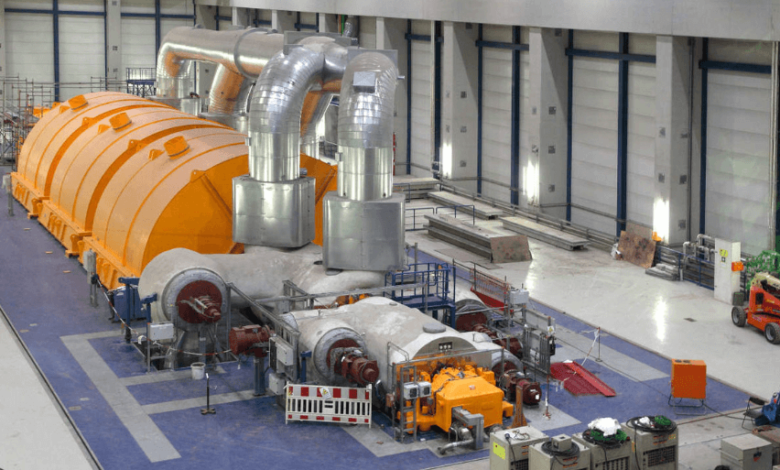Turbine Annulus Cleaning Services: Restoring Efficiency and Reliability

Turbines are among the most powerful and sophisticated machines in modern industry, serving as the backbone of electricity generation, aviation propulsion, and heavy industrial processes. Gas, steam, hydro, and wind turbines all share a similar goal: to convert energy from natural sources into mechanical power. However, over time, their performance can decline due to fouling, deposits, and contamination in critical areas of the turbine.
One of the most vulnerable regions is the annulus—the narrow, ring-shaped passageway through which air, steam, or gases flow. The turbine annulus plays a crucial role in ensuring smooth, balanced, and efficient operation. Unfortunately, the annulus often collects dirt, carbon deposits, oil residues, metallic particles, and other contaminants. Left unaddressed, this buildup compromises airflow, reduces efficiency, and increases the risk of overheating or damage.
This is where turbine annulus cleaning services become essential. By restoring the annulus to its original clean state, industries can significantly improve turbine performance, reduce maintenance costs, and extend the operational life of these critical machines.
Understanding the Turbine Annulus
The term annulus refers to the ring-like space between the stationary casing and the rotating turbine components such as blades or vanes. This narrow passage allows the controlled flow of steam or gas as it expands and transfers energy to the turbine blades.
A clean annulus ensures:
- Uniform Airflow: Proper gas flow is necessary for balanced pressure distribution across blades.
- Optimal Cooling: Many turbines rely on cooling air passing through the annulus to regulate blade temperatures.
- Reduced Vibration: Deposits create imbalances that trigger harmful vibrations.
- Fuel Efficiency: A fouled annulus disrupts thermodynamic efficiency, forcing turbines to consume more fuel for less output.
When the annulus becomes clogged or fouled, the turbine’s efficiency drops, emissions increase, and stress on components accelerates wear. Over time, this can result in costly breakdowns or the need for major overhauls.
Causes of Annulus Fouling
Annulus contamination occurs due to several operational and environmental factors:
- Fuel Impurities: In gas turbines, incomplete combustion leaves carbon deposits and unburned particles.
- Lubricant Residues: Oil leaks or mist can accumulate in the annulus, especially in older turbines.
- Moisture and Minerals: In steam turbines, minerals from boiler feedwater can precipitate and form scaling.
- Environmental Particles: Dust, salt, and sand enter through intake systems, particularly in offshore or desert installations.
- Metallic Wear Debris: Microscopic fragments from blades or bearings circulate through the system and settle in the annulus.
Without proper cleaning, these contaminants build up layer by layer, narrowing flow passages and causing turbulence, heat stress, and vibration.
The Role of Turbine Annulus Cleaning Services
Turbine annulus cleaning services are specialised maintenance solutions designed to restore the annulus to near-original condition. Unlike general turbine cleaning, annulus cleaning requires precision, expertise, and advanced tools because of the tight spaces and critical role this component plays in turbine operation.
The goals of annulus cleaning services include:
- Removing all fouling, deposits, and obstructions.
- Restoring airflow and cooling efficiency.
- Minimising wear and extending the life of blades and seals.
- Reducing fuel consumption by improving turbine efficiency.
- Supporting compliance with emission regulations by ensuring clean combustion.
See also: Safety and Technique of Eyebrow Tattoo Removal in Dubai
Methods Used in Annulus Cleaning
Annulus cleaning is performed using a variety of techniques depending on turbine type, contamination severity, and operational requirements.
1. Dry Ice Blasting
- Utilises compressed CO₂ pellets that sublimate upon impact, lifting off deposits without damaging surfaces.
- Effective for removing carbon, oil, and dirt from sensitive turbine parts.
- Leaves no secondary waste since the CO₂ evaporates.
2. Abrasive Blasting
- Involves fine media such as garnet or glass beads propelled at high velocity.
- Effective for hardened scaling but must be carefully controlled to avoid surface damage.
3. Chemical Cleaning
- Special solvents or detergents dissolve oil, grease, and mineral deposits.
- Often used in combination with flushing to remove residues.
- Requires careful handling to avoid corrosion or chemical hazards.
4. Ultrasonic Cleaning
- Submerges smaller components in ultrasonic baths where sound waves dislodge particles.
- Useful for precision cleaning of removable turbine parts.
5. Hydroblasting / Water Jetting
- High-pressure water jets remove tough deposits such as scaling or hardened fouling.
- Frequently used in steam turbines where mineral buildup is significant.
6. Vacuum and Manual Cleaning
- In some cases, technicians use brushes, vacuums, and manual tools for final touches.
- Combined with inspection tools such as borescopes to verify cleanliness.
Each method has advantages and limitations. Professional annulus cleaning services often combine multiple approaches to achieve optimal results.
Inspection During Annulus Cleaning
Cleaning services are usually combined with inspection procedures. Once the annulus is cleared, technicians use borescopes, cameras, and NDT methods to check for:
- Blade Erosion or Cracks
- Seal Wear
- Casing Distortion
- Corrosion Pitting
- Alignment Issues
This integrated approach ensures that hidden problems are detected early while the turbine is already open for cleaning.
Benefits of Professional Annulus Cleaning
The advantages of investing in professional annulus cleaning are substantial:
- Improved Efficiency: Clean airflow restores turbine performance, often recovering several percentage points of efficiency.
- Lower Fuel Costs: Reduced fouling means turbines burn less fuel to produce the same power output.
- Extended Component Life: Cleaner operating conditions reduce wear on blades, seals, and rotors.
- Reduced Downtime: Prevents unexpected failures and aligns maintenance with planned outages.
- Environmental Compliance: Reduces emissions by ensuring complete combustion and efficient operation.
- Enhanced Reliability: A clean annulus provides stable performance, critical for industries dependent on continuous power supply.
Challenges in Annulus Cleaning
Despite the benefits, annulus cleaning comes with challenges:
- Accessibility: The annulus is a narrow space, making cleaning difficult without specialised tools.
- Downtime Requirements: Cleaning requires turbine shutdown, which must be coordinated with production schedules.
- Risk of Damage: Aggressive cleaning methods may harm delicate turbine components if not properly managed.
- Environmental Considerations: Chemical and abrasive methods may create waste streams requiring proper disposal.
- Skill Demands: Successful cleaning requires trained technicians with experience in turbine systems.
Best Practices in Turbine Annulus Cleaning
To ensure effective and safe cleaning, industries should follow best practices:
- Use Certified Professionals: Select service providers with proven expertise in turbine cleaning and inspection.
- Plan Cleaning During Scheduled Outages: Coordinate cleaning with planned downtime to minimise disruption.
- Choose the Right Method: Match cleaning techniques to deposit type and turbine material.
- Combine Cleaning with Inspection: Use the opportunity to inspect blades, seals, and casings for hidden defects.
- Document Findings: Maintain detailed records of contamination levels and cleaning results for future maintenance planning.
- Leverage Modern Technology: Consider robotic cleaners, borescopes, and remote inspection tools to improve precision.
The Future of Annulus Cleaning Services
The turbine industry is moving towards more advanced, efficient cleaning solutions:
- Robotic Cleaning Systems: Small robotic devices equipped with cameras and cleaning tools can navigate the annulus and perform precise cleaning.
- Laser Cleaning: Non-abrasive lasers are being tested to remove deposits with minimal risk of damage.
- Automated Monitoring: Sensors in turbines will soon predict when annulus cleaning is needed, moving maintenance from scheduled to predictive.
- Eco-Friendly Solutions: New cleaning agents and methods focus on minimising environmental impact and waste.
These innovations will make annulus cleaning faster, safer, and more cost-effective in the years to come.
Conclusion
The turbine annulus may be a small component compared to the massive scale of the entire turbine, but its importance cannot be underestimated. As the passageway that ensures proper airflow, cooling, and pressure distribution, it directly influences efficiency, reliability, and safety. Contaminants that build up in this space silently erode turbine performance until output drops, fuel costs rise, and wear accelerates.
Turbine annulus cleaning services provide a targeted solution to this problem. By using advanced techniques—ranging from dry ice blasting and hydroblasting to chemical and robotic cleaning—professionals can restore the annulus to pristine condition. The result is a turbine that runs more efficiently, lasts longer, and operates with fewer risks.
For industries that rely on continuous, reliable power, investing in annulus cleaning is not optional; it is an essential part of preventive maintenance. With modern methods and future innovations, annulus cleaning services will continue to play a central role in keeping turbines safe, efficient, and sustainable for decades to come.




